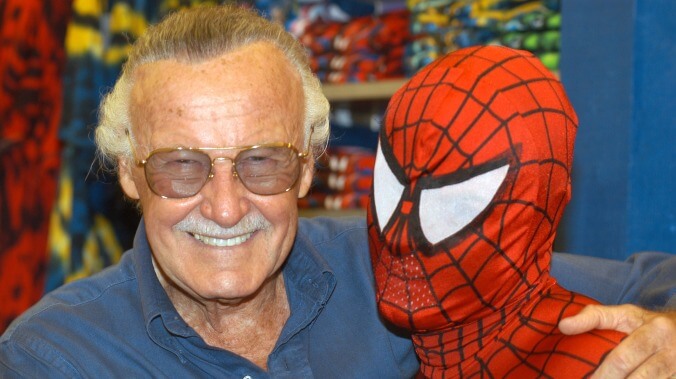Read This: The newspaper profile that killed Marvel’s mightiest team-up

While the era of the Marvel Cinematic Universe has been key to cementing Stan Lee’s hagiography, even the slightest research into the comic book legend’s history reveals a much more complicated, often troubling legacy. To make an extremel long story short: While Lee was widely marketed (often by himself) as the mastermind behind all things classic Marvel, the charismatic comic book frontman often stole the spotlight from a bunch of other talented writers and artists. Arguably no one suffered more from this than Jack Kirby, who co-created The X-Men, Fantastic Four, Iron Man, and several other Marvel fixtures alongside Lee, and who nursed a healthy (if understandable) resentment of “Stan The Man” for the rest of his life.
The fallout between the simultaneously beloved and controversial face of Marvel Comics and Kirby is almost as legendary as some of their superhero icons, and just one of the many fascinating aspects detailed in Abraham Riesman’s new biography, True Believer: The Rise And Fall Of Stan Lee, out today with Penguin Random House. Over at Slate this morning, a new excerpt from Riesman’s book details the comparatively small newspaper profile of the duo that proved to be the final straw for Kirby.
Back in 1965, Marvel Comics was a hot commodity (not yet the multi-billion dollar commodity it is today, but still), and Stan Lee was milking it for all it was worth. When up-and-coming journalist Nat Freedland pitched a piece on Lee, Kirby, and the whole Marvel operation to The New York Herald Tribune, what Freedland naively believed to be simple “day in the life” visit to Marvel HQ turned out to be somewhat of a staged PR stunt on Lee’s part.
“There are little touches I can see now, in retrospect—little touches of being an egomaniac and taking all the credit… But he told me about all the stuff, and I thought it was cute and tremendous. I saw artists coming around, but I didn’t talk to them much,” Freedland recounts of Lee in the True Believe excerpt.
Lee made it seem like he came up with most of an issue’s major plot points, which he conveyed to artists like Kirby, who would make his ideas a reality—which was a stretch. “Indeed, according to Kirby, he was by that point primarily just dictating to Lee what he was going to do in a given story, and those meager plot conversations weren’t even happening in person; they were all over the phone,” writes Riesman. “Freedland knew none of this and didn’t bother to find it out. ‘I was so enchanted by the whole thing,’ he says. The staged scene wound up as the central sequence in the Herald Tribune story.”
As it turns out, Kirby was less than thrilled when the article finally published. As his former assistant and biographer, Mark Evanier, remembered, “Jack’s wife, Roz, read the article early the Sunday morning it came out, woke Jack up to read it… Jack phoned Stan at home to wake him up and complain. Both men later recalled that the collaboration was never the same after that day, and it was more than just an injured ego at work.”
Freedland, to his credit, apparently regrets his shoddy reporting on the Lee-Kirby relationship—but Riesman certainly makes it seem like that relationship would’ve been on its last legs with or without the profile. The superpowered characters Kirby and Lee introduced to the world have managed to recover from more devastating blows, but it’s pretty difficult to ret-con reality, especially when you have writers like Riesman there to investigate.
Send Great Job, Internet tips to [email protected]